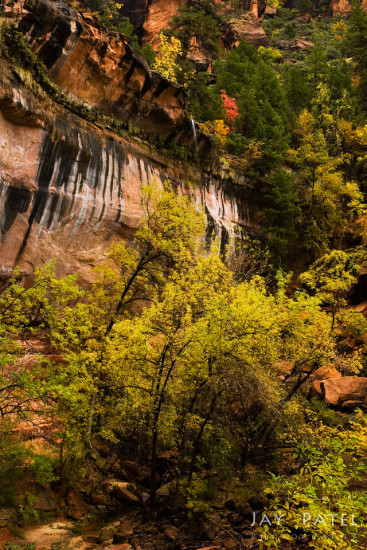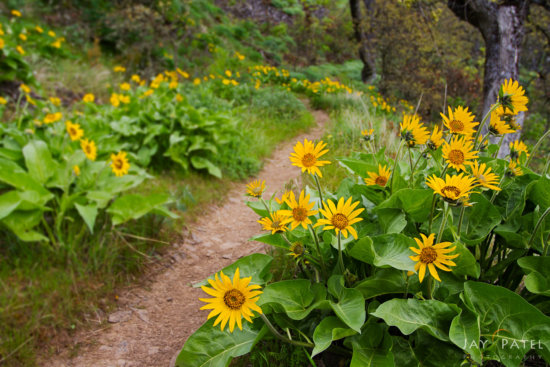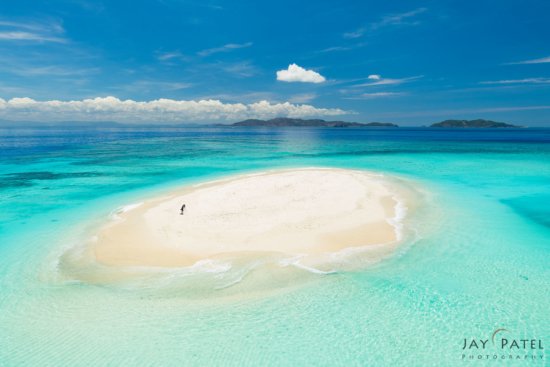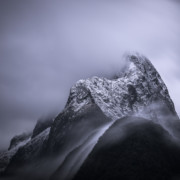5 Important Variables for Mastering Creative Photography
Creative photography allows you to use out-of-the-box thinking to produce breathtaking landscape photos that make your users go WOW!! It is true what they say that without creativity your photos look more like snap shots.
What Can Creative Photography Do?
Consider these two landscape photos from Zion National Park in Utah. I took this first shot (Light Falls) in 2005. The image highlights the beauty of the waterfall and provides a portrait of the park as well, showcasing the beautiful sandstone walls and lovely autumn foliage.
Take a look at the second photo taken with a wide angle lens. It’s not unusual to find a scene like this in nature. As pretty as the location is, the shot doesn’t do it justice. When I arrived at the first of the Emerald Pools, the beauty of the place overwhelmed me. The fall colors were at their peak and the colors of the canyon walls were enriched by recent showers. The falls were flowing beautifully as well. Like any other landscape photographer, my first instinct was to grab the wide angle lens and capture the scene.
Although the scene is beautiful, the waterfall is nearly lost in the image and there is no clear point of focus. I wanted the waterfall to be the main point of interest, but it ended up lost as a sliver of silver surrounded by busy foliage and sandstone.
So, how do you fix a shot like this? This is where creative photography comes to rescue.
Walking to the opposite side of the falls, I noticed that the falling water was backlit with soft residual light from the overcast sky. This made it stand out against the darker, water-soaked walls of the canyon. In order to focus the attention on the waterfall, I used a longer focal length (50mm lens on 1.6 crop factor camera). This allowed the waterfall to fill up the frame. I also decided to include the tree and striped walls of the canyon to provide a sense of time and place.
Creative Photography Took Kit
Creative photography like this requires you to develop out-of-the-box thinking. This is probably easier said then done because there are no rules or cookie cutter approaches to help you. We use a creative photography tool kit that we developed over the past decade to help us capture unique landscape photos.
What is a creative photography took kit? It is a collection of options available for landscape photographers to capture breathtaking unique landscape photos, no matter what.
Here are some ideas from our creative photography tool kit:
- Creative use of light: In the Light Falls photos from Zion National Park, I used soft light to back-light the waterfall to ensure it stood out against the dark canyon walls.
- Camera settings: The goal of most landscape photography is to capture sharp photos. As such, we pay particular attention to things like focus settings, aperture, sharpness of the lens, and more. But why not use your camera settings to create a wide angle photos with shallow DOF? Here are some examples of this:
- Look for usual photography composition: These days, you can rent a drone or charter a helicopter to create some unique perspectives of familiar or exotic locations. We took this recent shot from a helicopter in Fuji. As you can see, we had a stunning birds-eye view of Varina photographing on a small sand bar.
- Take advantage of the wildlife: You don’t need expensive gear to make this happen. Just grab your camera and wander around the tide pools on a beach to find interesting things to capture. I captured this sea anemone in Australia just few hundred feet from the parking lot. I used a diffuser to soften the harsh light and bring out the rich colors in the sea anemone.
- Use special equipment: You can easily go broke trying to buy every piece of photography equipment for creative landscape photography. Varina and I always carry macro photography lenses and Lensbaby lenses. These lenses allow us to create images that we may not be able to capture with other lenses. Here are some examples:
We routinely combine multiple options from our creative photography tool kit. For example, I was able to use light, long focal length, dark background and fall colors to come away with unusual photos from this gorgeous location. Being creative can be a challenge, but you can make it happen with a little knowledge and practice. Our Creative Photography with Lensbaby course offers an in-depth look at our creative photography tool kit and how we use it to capture some striking photos.
So… the next time you are stumped when visiting a location, reach into your creative tool box and look at which options would work best to come away with the photos that you envision.

















